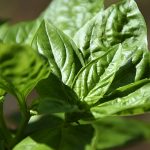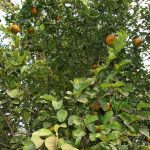La Mariposa has possibly the most varied range of volunteer projects anywhere in Central America! Children’s reading projects, working with disabled children, including helping with hydro and equino therapy (using our rescued horses!), helping out in a women’s cooperative bakery……just some of the options available – our website tells you more.
We offer a volunteer package –
- Mornings volunteering at a supported placement and working alongside workers from the local community, this also gives opportunities for practicing Spanish
- Afternoons in Spanish classes – our Spanish school is one of the top rated in Central America, the classes are one on one
- Living in the house of a local family.
- You get to eat your produce at lunch in La Mariposa with the other Spanish students.
- The cost of the whole package is $280
One of our most popular placements has always been on our organic veggie farm. Paulette, the founder of La Mariposa, also lives here with her daughter and a few rescued dogs, in a small straw built house.
Over the 6 years it has been operating, we have developed the farm on sound permaculture principles and we are always looking to improve. Though very small, half an acre or so, you will find we grow an impressive array of vegetable and native fruit trees which are consumed mostly by La Mariposa guests. We have taken the Principles of Permaculture to heart – you can see how we value diversity and the marginal – this applies to our relationships with people as well as to the land. We believe in looking for small, appropriate solutions and don’t have to feel we have to move faster and faster in order to find immediate answers. Change is often difficult, especially when it involves destruction or death (of a person, a dog, a tree) but has to be integrated into the way things are. This does not, of course, mean that we do not take a stand when the causes of change are exploitation and greed.
On a practical level we are undertaking the following…
- Water conservation is of course critical. The local municipality supplies us with water twice a week and we store this in the “pila”, a large tank which holds water both for watering the vegetables and for Paulette’s house. We water by hand in order not to waste any – this also helps us maximize local employment. We also use a number of ways to conserve humidity in the ground. For example, we spread straw around the vegetables and split the trunks of banana trees, which contain a lot of water, putting them on the ground to maintain moisture. Grey water from the household is reused on flowering plants. Building with straw also uses very little water, as opposed to concrete dwellings.

- Although the original house has an indoor flushing toilet, we have built a latrine from bamboo which we ask everyone to use. It uses no water at all and is perfectly sanitary. In the wet season we collect rain water using a very simple system of gutters and pipes.

- Constant use of organic material to fertilize and enrich the soil is essential. We use a mixture of rice husks, soil from our worm project (the worms consume manure bought from local families who are still using oxen as a means of making a living), as well as compost from garden waste (leaves etc) and kitchen waste from the house. We also practice a rotation system and plant nitrogen fixing plants such as the marengo tree and plenty of beans!

- We have learnt to respond to local conditions – for example for a long time we tried very hard to grow root vegetables such as carrots and beets. But they do not work well in our conditions so we now concentrate on what does well…lettuce, eggplant, okra, tomatoes, spinach, kale, beans…..

- We have planted a number of trees on the land. Some are fruit trees (papaya, mandarin, orange, avocado, coconut) and offer food for both humans and birds. Dogs too enjoy a slice of avocado! Others provide shade for the house and resting areas thus eliminating the need for fans in hot weather. And some are specifically for the benefit of birds, both for food and to provide living and nesting space.

- We are proud to share this precious piece of land, not only with humans, dogs and cats but with as much wildlife as is possible in a place so close to the town center. We do not allow toxic fumigations to take place, preferring to control the mosquito population through natural means such as spreading lime on the ground. We also try and ensure the survival of natural predators such as spiders, frogs, lizards and bats. We do this by ensuring their food supply and also, where necessary, providing housing for them. When we have a fallen orange tree, which happens from time to time, we leave it on the ground to provide food and cover for lizards etc. Not only does all of this help the veggie production, it also ensure a relaxing and peaceful place in which to work, live and just be!

- Over the years we have placed special emphasis on encouraging butterflies and birdlife. The latter has been so successful that it merits a separate post! For the moment, note that the bananas hanging in the aceituna and capulin trees (native trees which provide food for wildlife, including our pair of variegated squirrels) are there, along with seeds and water, to encourage birds. We are proud to say that we now have a large group of red legged honeycreepers who spend a good part of the year with us as well as 25 or so other species.

The stunning aracari, known here as felices (happy birds!)
IF YOU ARE INTERESTED IN VOLUNTEERING WITH US – read the website thoroughly, it will give you a good idea of how we work and your options. Write to us at lamariposaspanishschool06@gmail.com. We will send you a simple form to fill in, telling us your preferences.
Please note – your money also towards maintaining our employment project as well as all of the other environmental and community projects we support.



